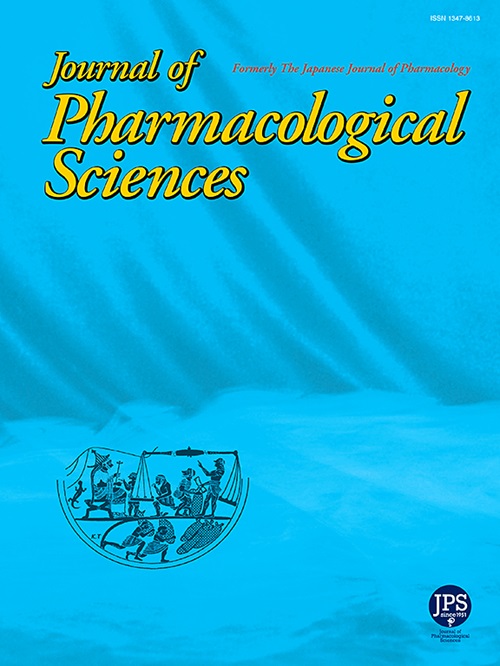应用综合网络分析阐明虾青素治疗缺血性脑卒中炎症的作用机制
IF 2.9
3区 医学
Q2 PHARMACOLOGY & PHARMACY
引用次数: 0
摘要
背景和目的缺血性中风是一种发病率很高的疾病。虾青素是一种对缺血性中风有保护作用的功能性食品。然而,虾青素保护缺血性中风的整体机制尚不清楚。方法采用大脑中动脉闭塞模型建立缺血性脑卒中模型,用25、45、65 mg/kg虾青素治疗缺血性脑卒中模型7天。造模成功后24 h处死大鼠。结果综合网络分析结果表明,虾青素可通过Toll like受体信号通路和细胞凋亡通路保护缺血性中风。虾青素与PARP1、AIF、Bax、IL10、MMP9、Bcl2的结合得分较低,且复合紧密。此外,虾青素还减少了 PARP1、AIF、Bax、TLR4、MMP9、IL1β 等炎症和细胞死亡相关蛋白,增加了 Bcl2 和 IL10 等抗炎和抗细胞死亡相关蛋白。我们的研究为后续虾青素治疗缺血性脑卒中的实验和临床应用提供了理论依据。本文章由计算机程序翻译,如有差异,请以英文原文为准。

Clarifying the mechanism of astaxanthin in the treatment of inflammation in ischemic stroke using integrated network analysis
Background and objective
Ischemic stroke is a disease with high incidence. Astaxanthin is a functional foods with protective effects against ischemic stroke. However, the integral mechanism of astaxanthin protect ischemic stroke is not clear. The aim of this study was to investigate the mechanism of astaxanthin protect ischemic stroke by integrated network analysis.
Methods
Middle cerebral artery occlusion model was used to establish ischemic stroke model, and ischemic stroke models were treated with 25, 45, 65 mg/kg astaxanthin for 7 days. The rats were killed 24 h after successful modeling. Integrated network analysis, molecular docking, molecular dynamics (MD) simulation, and Western blot were used to explore the astaxanthin and potential proteins related to inflammation and cell death.
Results
The results of integrated network analysis indicate that astaxanthin may protect ischemic stroke through Toll like receptor signaling pathway and apoptosis pathway. The main targets involved MMP9, IL1B, IL10, Bcl2 and among others. astaxanthin has a low binding score and compact complex with PARP1, AIF, Bax, IL10, MMP9, Bcl2. In addition, astaxanthin has reduced inflammation and cell death-related proteins such as PARP1, AIF, Bax, TLR4, MMP9, IL1β and increased anti-inflammation and anti-cell death-related proteins by Bcl2 and IL10.
Conclusions
Astaxanthin can improve anti-inflammatory, anti-cell death ability after ischemic stroke. Our study provides a theoretical basis for the subsequent experimental and clinical application of astaxanthin in the treatment of ischemic stroke.
求助全文
通过发布文献求助,成功后即可免费获取论文全文。
去求助
来源期刊
CiteScore
6.20
自引率
2.90%
发文量
104
审稿时长
31 days
期刊介绍:
Journal of Pharmacological Sciences (JPS) is an international open access journal intended for the advancement of pharmacological sciences in the world. The Journal welcomes submissions in all fields of experimental and clinical pharmacology, including neuroscience, and biochemical, cellular, and molecular pharmacology for publication as Reviews, Full Papers or Short Communications. Short Communications are short research article intended to provide novel and exciting pharmacological findings. Manuscripts concerning descriptive case reports, pharmacokinetic and pharmacodynamic studies without pharmacological mechanism and dose-response determinations are not acceptable and will be rejected without peer review. The ethnopharmacological studies are also out of the scope of this journal. Furthermore, JPS does not publish work on the actions of biological extracts unknown chemical composition.

 求助内容:
求助内容: 应助结果提醒方式:
应助结果提醒方式:


